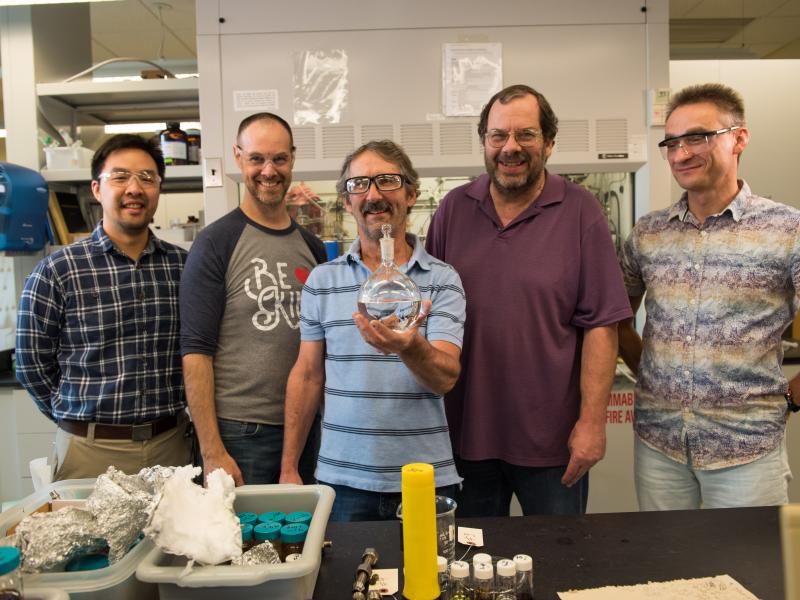
Aviation Biofuels
Aviation Biofuels
Developing biofuels that power aviation
Developing biofuels that power aviation
Whether traveling to grandma’s house in Peoria or a weeklong work conference in Los Angeles, often the quickest and most convenient way to reach your destination is by jet.
But there’s a downside to air travel. The fuel that powers aircraft releases greenhouse gases such as carbon dioxide into the air, polluting the atmosphere—and even the stratosphere.
The U.S. Department of Energy’s Bioenergy Technologies Office partners with national laboratories like PNNL to increase the supply of low-carbon-intensity jet fuel. These collaborations are advancing research and development surrounding renewable and waste feedstocks, fuel conversion, and production of fuel at commercial scale.
Commercial success and beyond
PNNL has made significant strides in the aviation biofuels realm with our commercial partner, LanzaTech. In the late 2000s, PNNL began investigating the catalytic chemistries that turn waste gases and biomass feedstocks into jet fuel.
PNNL’s biofuels research team constructed a lab-scale experimental setting and, in partnership with LanzaTech, used it to develop and produce 5-gallon samples of high-quality jet fuel from ethanol. LanzaTech then scaled up production to more than 4,000 gallons. In September 2018, LanzaTech licensed the technology from PNNL, and the following month, a Virgin Atlantic 747 jet flew from Orlando to London, marking the first commercial flight using the sustainable fuel.
PNNL researchers are now pushing forward to help BETO identify future opportunities for bioenergy programs involving high-energy-content fuels. One area in which PNNL is significantly contributing is through evaluations to determine the potential for producing sustainable aviation biofuels from wastes and associated challenges and markets.
Flying commercially to your destination is getting cleaner and more sustainable, thanks in part to aviation biofuels research conducted by PNNL.

